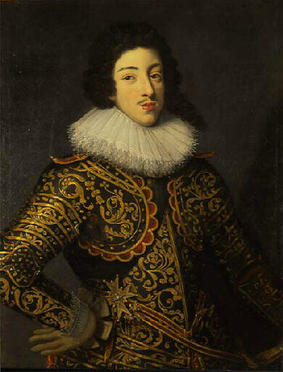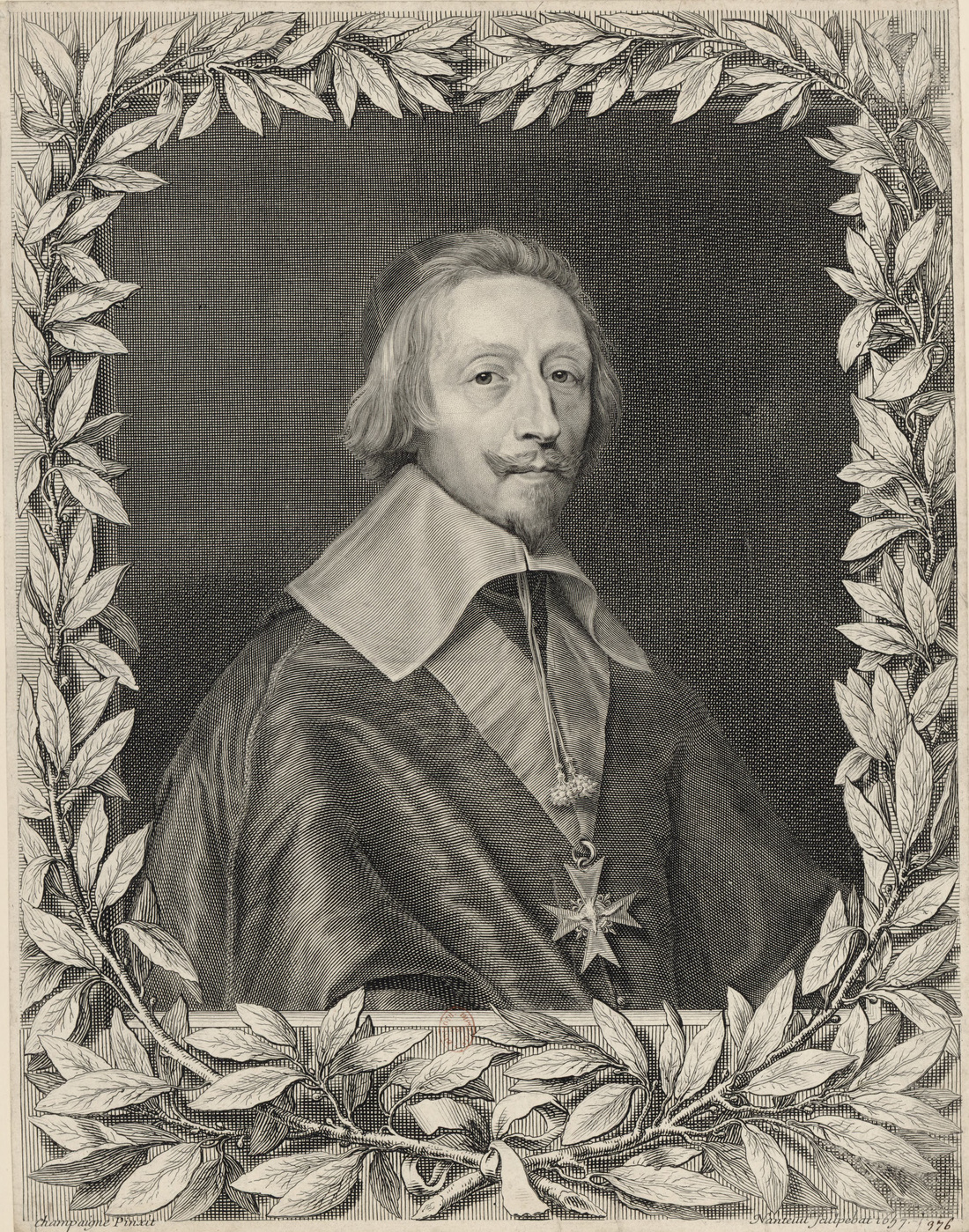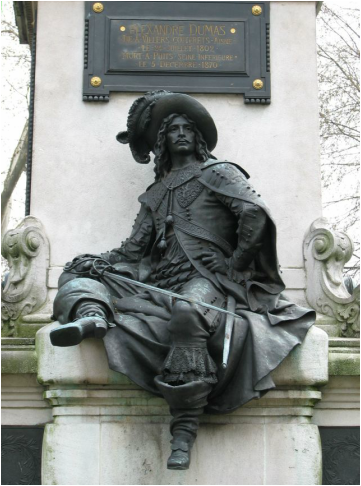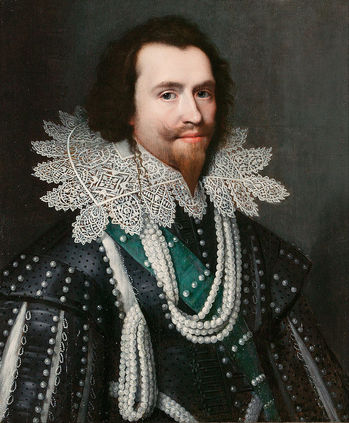|
Dumas garnered interest in his novel by basing it on real figures from French history. Much like Shakespeare, he changed the characters around to suit his needs and make them more interesting than they likely were. In his adaptation Ludwig again adapts the same characters to suit his purpose and his play, so what we have in the play bear little resemblance to the characters of history. And that's okay! This isn't a history piece, that would be boring.
That said, here are brief overviews of the inspirations for the characters in the novel and the play. They provide detail and context, that's all. |
|
|
King Louis XIIIKing Louis XII ascended the throne at age nine after his father, a Protestant, was assassinated. His mother, Marie de' Medici ruled as regent for many years. Marie didn't give up power when she should have, so Louis staged a coup and had her exiled. Most of Louis' reign was taken up by the Thirty Years War (1618 - 1648) which led to his nicknames of Warrior King and Louis the Just. Louis ruled as an absolute monarch.
King Louis was also known was "Louis the Chaste" because there was little evidence of his taking of mistresses. Historians, as they so often do, conjecture that he might have been gay or bisexual. Cardinal Richelieu1585 -1642. From a minor noble family. Richelieu had a reputation as a good speaker and administrator, and--most importantly--as a devout Roman Catholic. Louis XIII's mother learned of him and brought him to court to be the new queen, Queen Anne's, Chaplain. Later, he was also appointed as Secretary of State for War and Foreign Affairs.
When Louis XII exiled his mother, Richelieu served as an in between for the King and his mom. After more careful maneuvering, Richelieu was given a seat on the Royal Council and in August 1624, was made Chief Minister. His main goals were the centralization of power in France, and eliminating the Huguenots. During the Thirty Years War, Richelieu aligned France with Protestant powers in an effort to fight the growing threat of the House of Hapsburg. Richelieu was denounced by many as a traitor to the Roman Catholic Church. Because of this, combined with Richelieu's later alienating policies, he is our villain in The Three Musketeers. Charles Ogier de Batz de Castelmore,
|
Queen Anne of AustriaThe eldest daughter of King Philip III of Spain and a part of the House of Hapsburg. Her marriage to Louis XIII was part of a tradition of marrying Catholic leaders to other Catholic leaders. She was betrothed at age eleven to Louis XIII. They were married when they were both fourteen. Anne suffered a number of stillborn births, and remained childless for sixteen years after falling down the stairs when pregnant for the second time.
As Cardinal Richelieu became King Louis' chief advisor, tension between Anne and her king grew. Richelieu's top priority was eliminating the Hapsburg threat. Anne was drawn into anti-Richelieu conspiracies. In 1635, France declared war on Spain and everything got much harder for Anne. However, she produced a male heir, remarkably, in 1640 and far outlived her husband and Cardinal Richelieu. George Villiers, First Duke of Buckingham1592-1628. Born as the son of a minor gentlemen, Buckingham went to court at 21 and caught the eye of King James I. James had a new wardrobe made for Buckingham and gave him the position of Cupbearer, a position that allowed him to make conversation with the King. After that, Buckingham rose through the ranks quickly, from a Gentleman of the Bedchamber, to Master of the King's Horses, to becoming a Viscount, and then made a Knight of the Garter. In 1618, he was the Marquess of Buckingham, dukedom of Buckingham. His new rank allowed him to dance in the same circles as Charles I, which led to a friendship. In 1619 Buckingham was appointed Lord Admiral of the Fleet, and in 1623 the former dukedom of Buckingham was recreated for him and he was negotiating abroad on the king's behalf. This made Buckingham the most important person outside of the royal family. Historians are contests about if Buckingham was James I's lover.
Under Charles I (during the time of our play), Buckingham aided Charles I in foreign affairs. Buckingham regularly led naval expeditions, and was first a supporter of France, and then an opponent during the Anglo-French conflict. Buckingham was considering an incompetent leader, evidenced through his flip-flopping of supporting Protestants and Catholics. As an Englishmen, he should have been firmly Protestant. Parliament was not a fan of the Duke, and twice tried to impeach him. The king prevented the impeachment both times. Buckingham's physician (a supposd diabolic influence) was mobbed and killed in the streets. A pamphlet was distributed afterwards: Let Charles and George do what they can, The Duke shall die like Doctor Lambe. The Duke was stabbed to death, on 23 August 1628, at the Greyhound Pub in Portsmouth by John Felton, an army officer who had been wounded in a military adventure with Buckingham. Buckingham livelong enough to jump out and should "Villain!" before falling down dead. Felton was lauded as a hero. Armand d'AthosVery little is known about the real Athos. He was a first cousin of the actual Porthos, and Athos was killed in a duel on December 21, 1643.
Isaac de PorthauAccording to an issue of Macmillan's Magazine from 1899:
The Porthaus were an ancient family of Béarn, taking their name from one of the old porthaux or portes (small frontier towers resembling the peel-towers of the British Border) with which the French and Spanish Pyrénées were studded. Porthos was a captain in the Musketeers and retired at the end of his career to be a secretary. |
|





